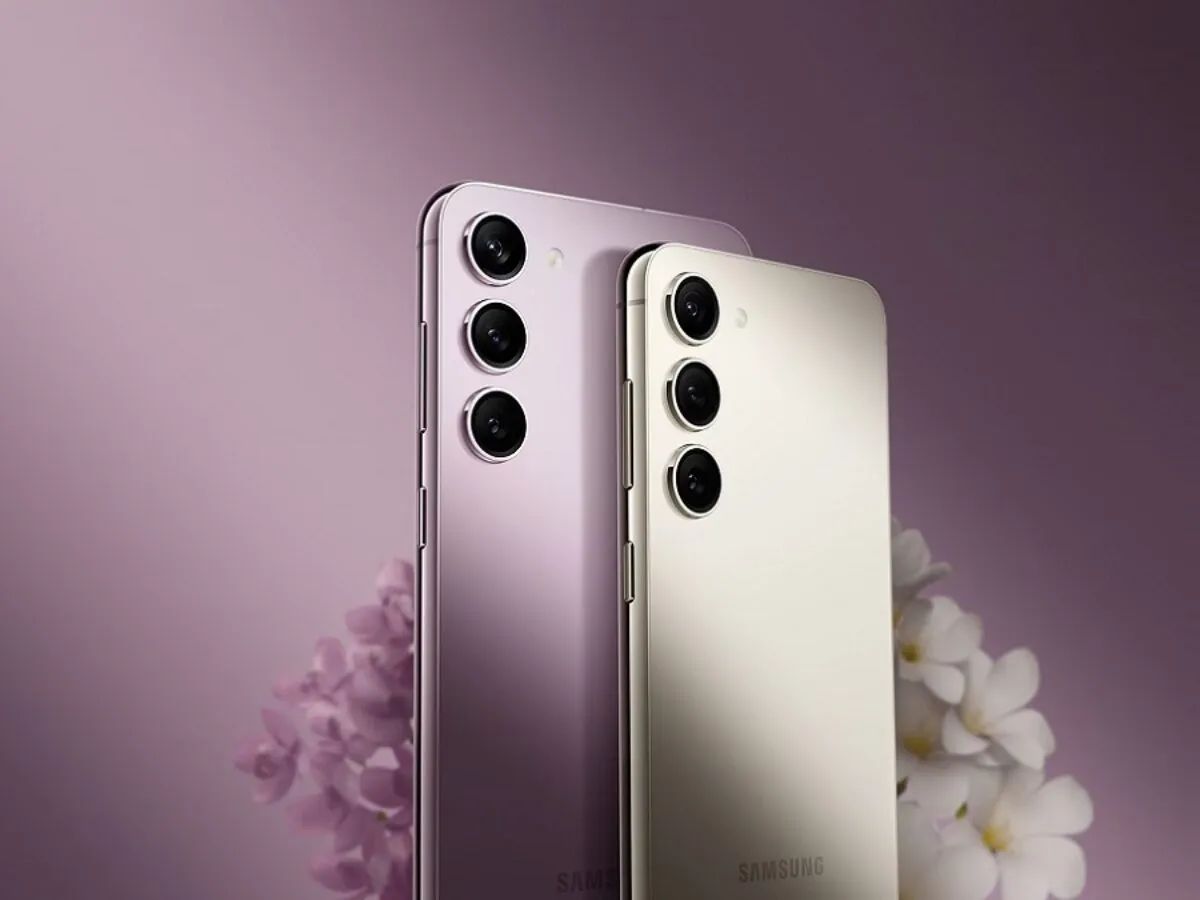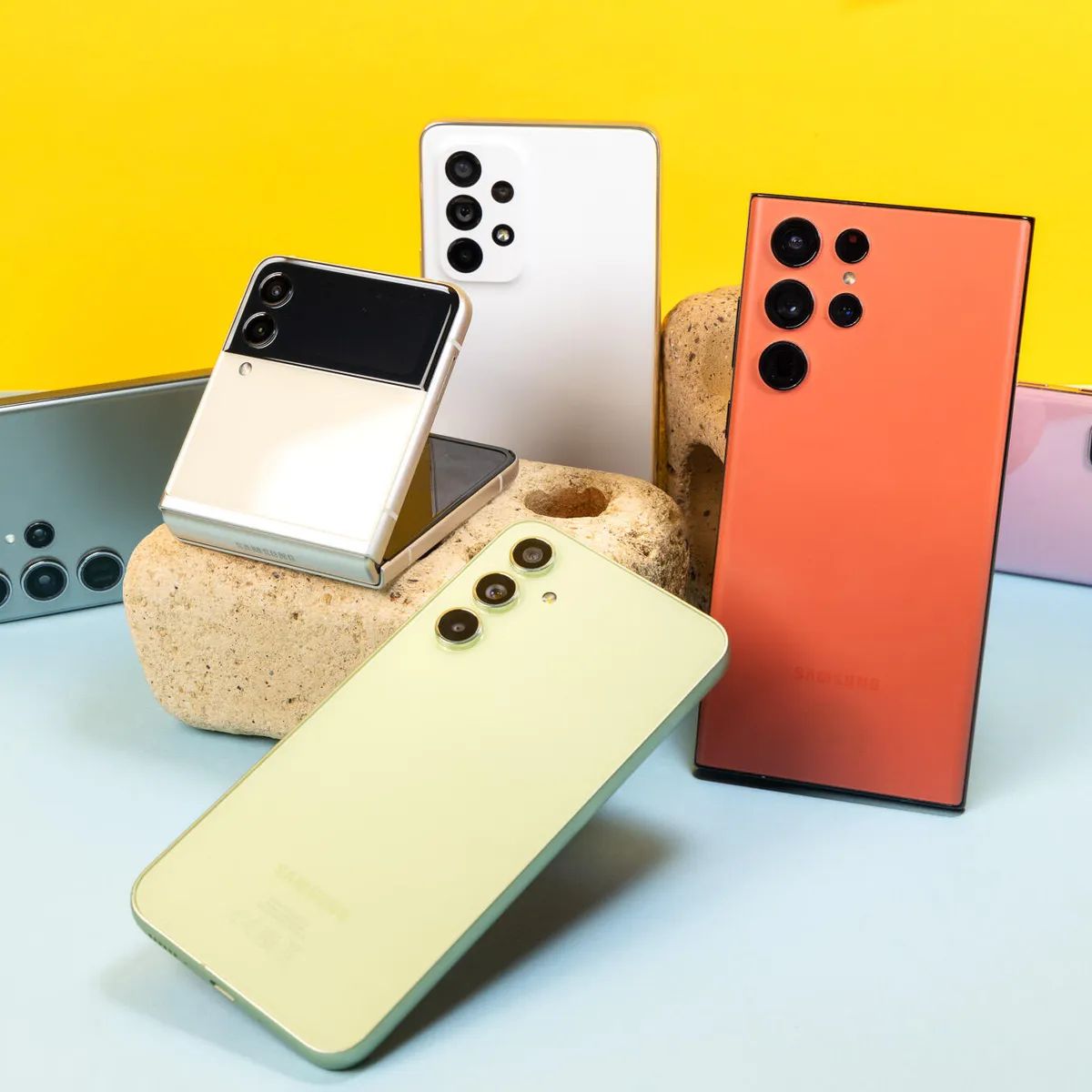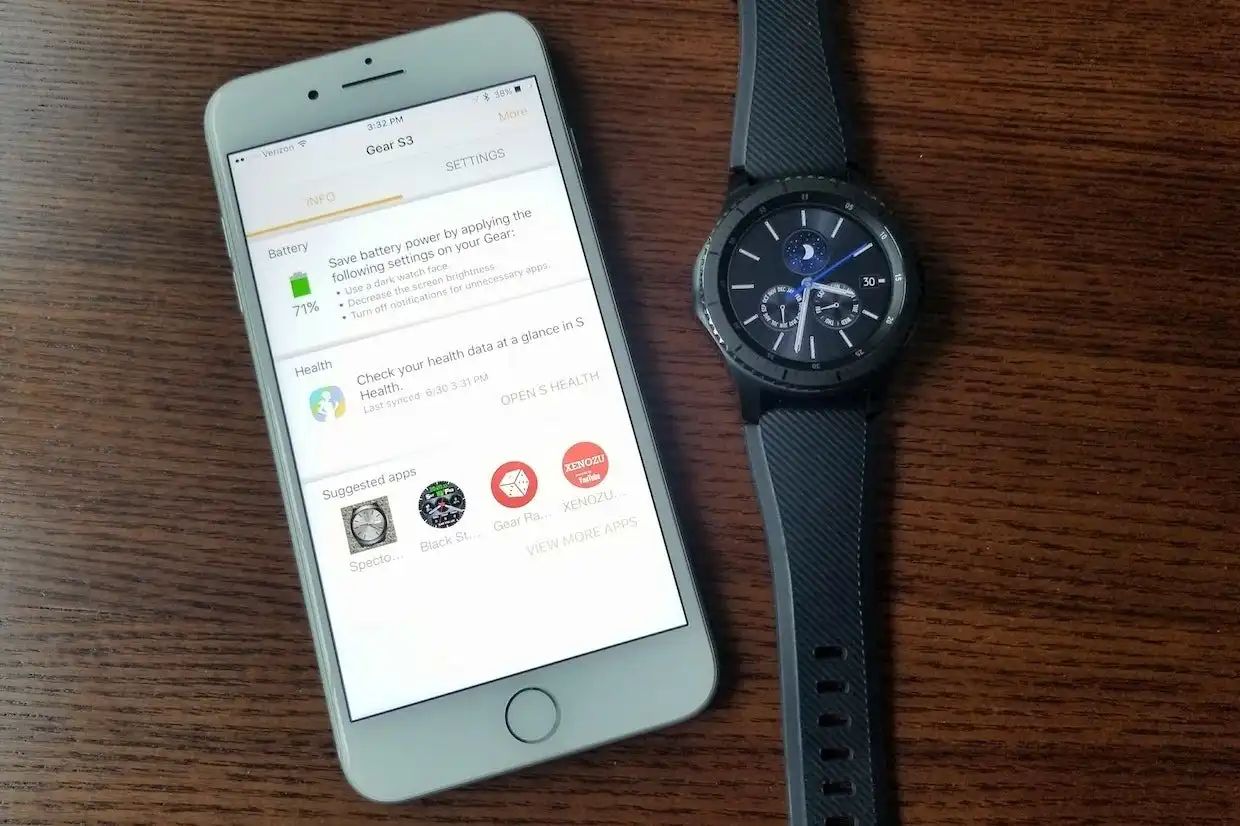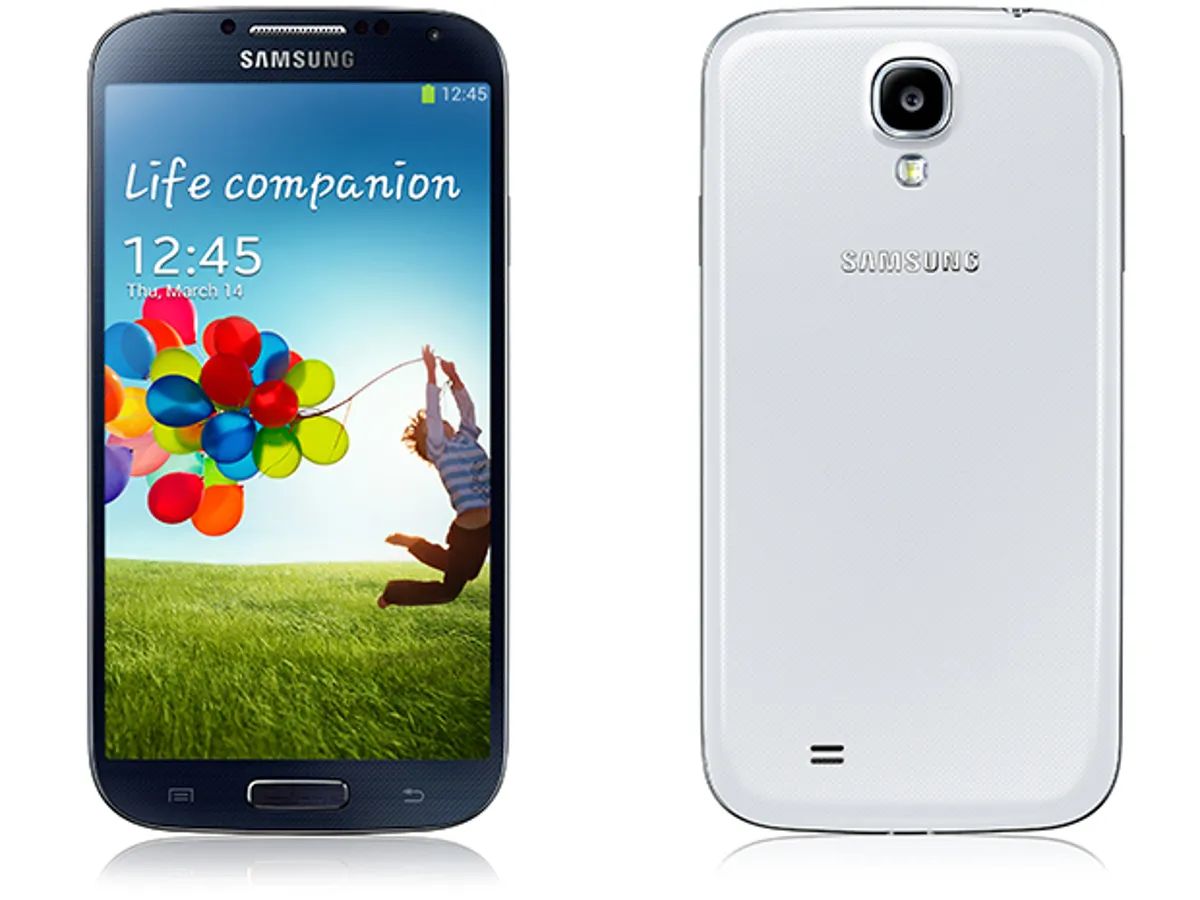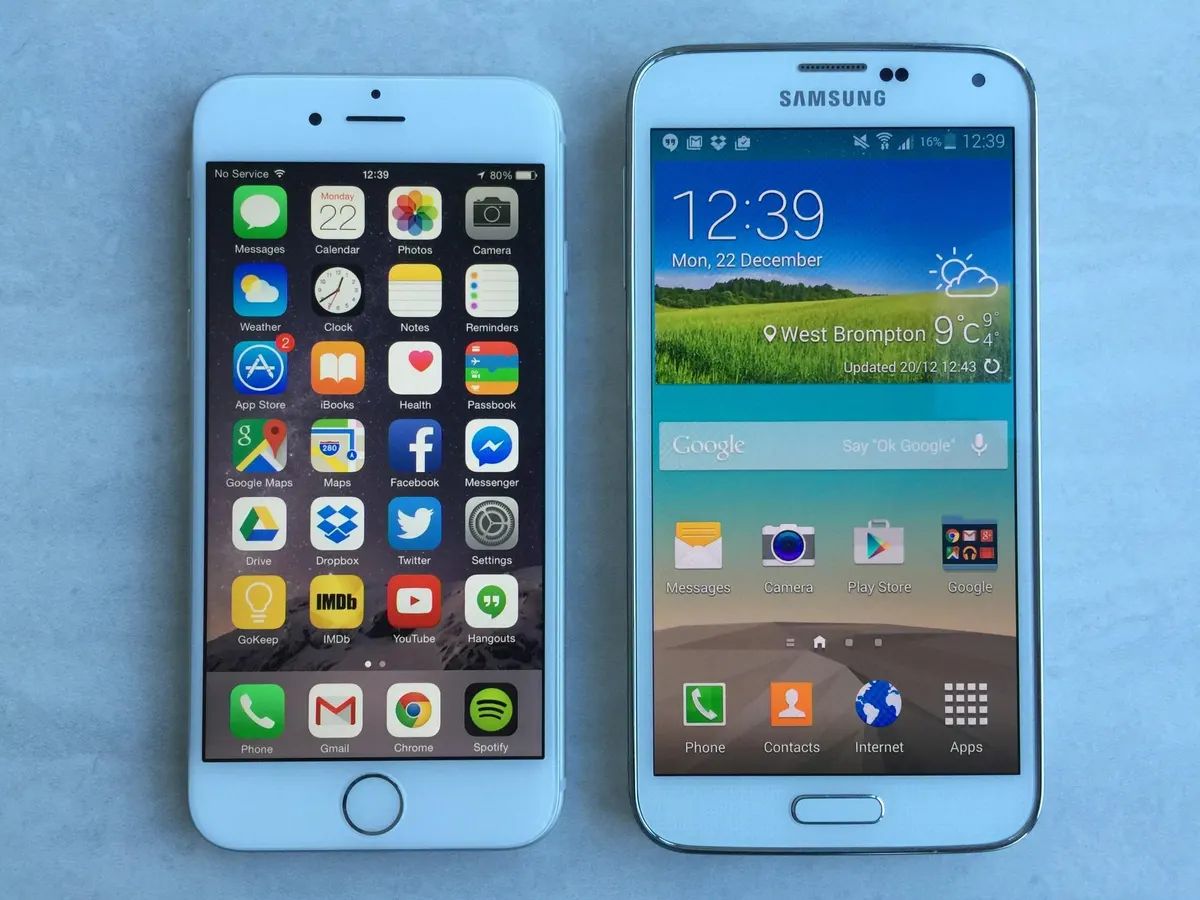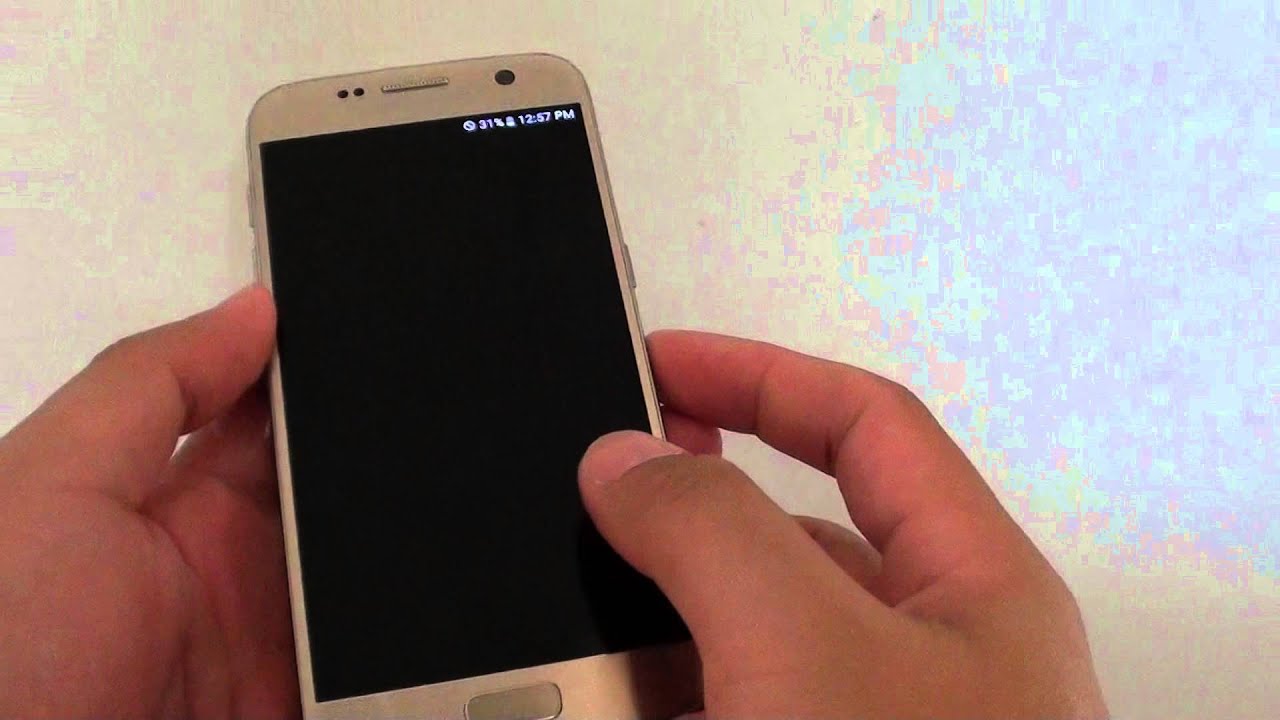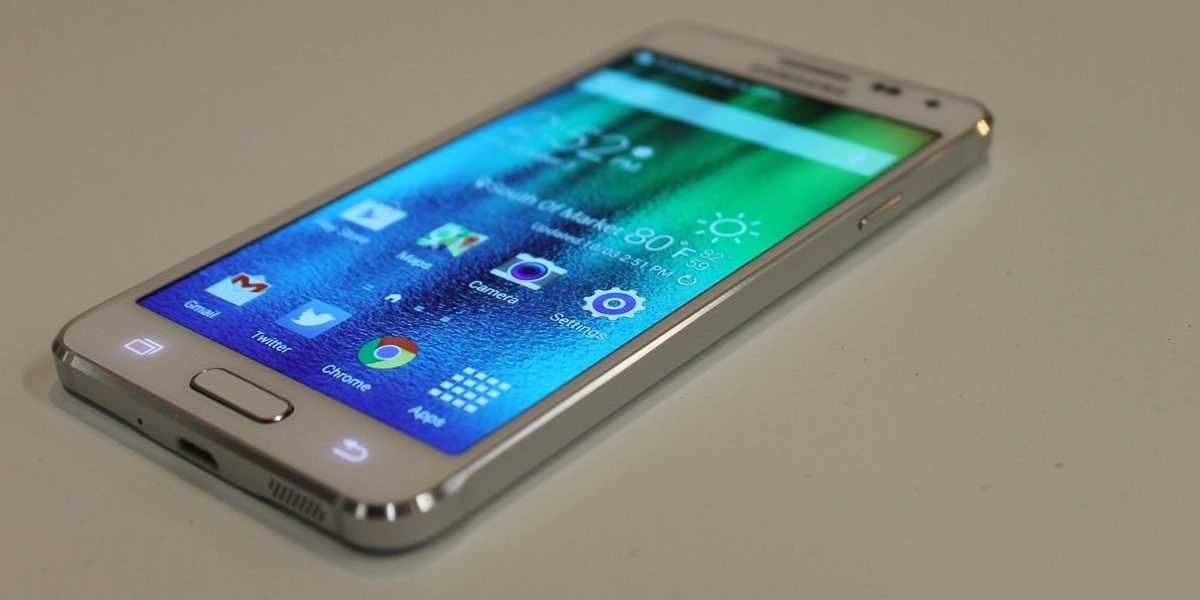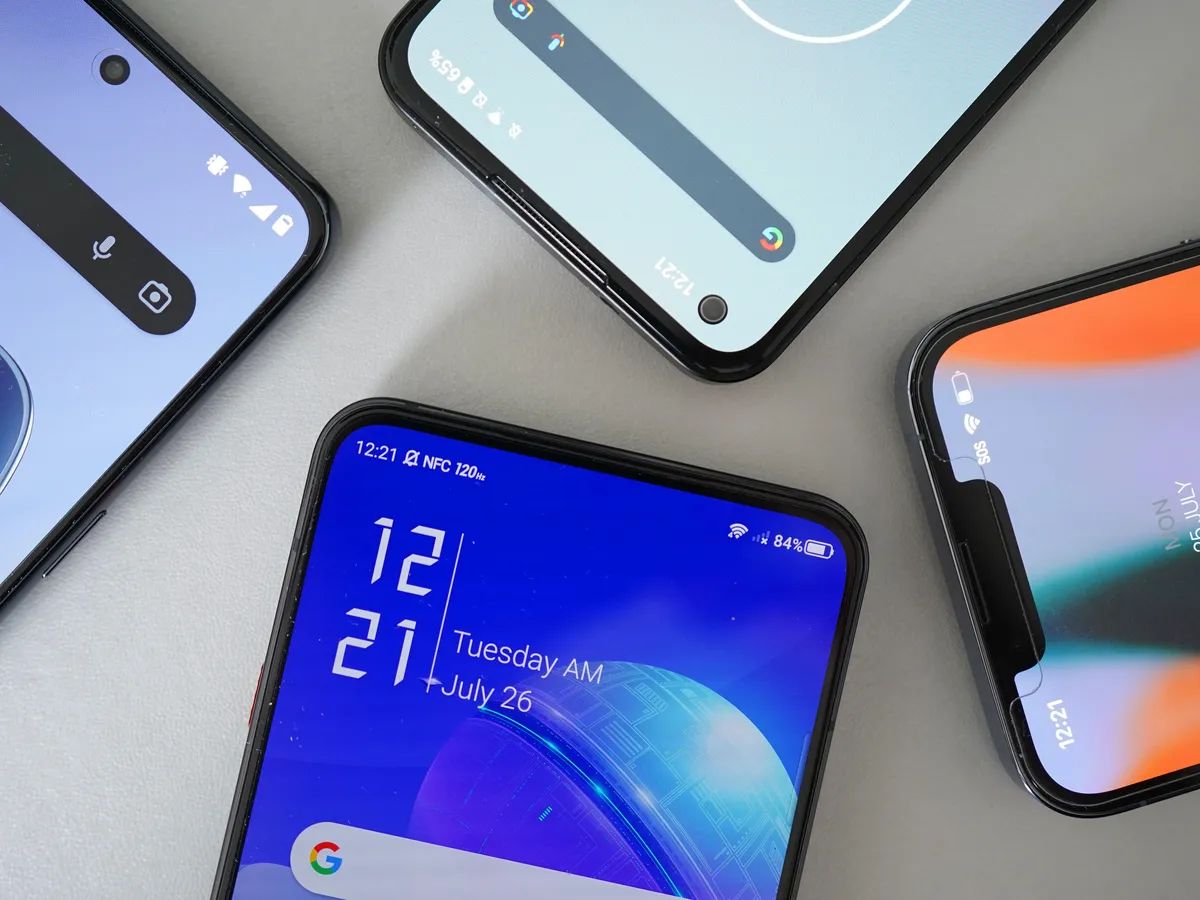Introduction
Welcome to the wonderful world of Samsung Galaxy smartphones! Whether you’re a new user or a long-time fan, this guide will help you make the most out of your device. The Samsung Galaxy offers a wide range of features and capabilities, from top-of-the-line cameras to powerful processing power. With this guide, you’ll learn how to navigate your Samsung Galaxy, customize its settings, manage your apps, take stunning photos and videos, browse the internet, make calls and send messages, and troubleshoot any potential issues that may arise.
With its sleek design, intuitive interface, and cutting-edge technology, the Samsung Galaxy is a true powerhouse. Whether you’re using it for work, entertainment, or keeping in touch with loved ones, this device has everything you need. In this guide, we’ll break down each aspect of the Samsung Galaxy, providing you with step-by-step instructions and helpful tips to optimize your experience.
Throughout this guide, we will explore various features and functionalities of the Samsung Galaxy, including customizing your device to suit your preferences, organizing files and data, and utilizing the internet and communication features available. Additionally, we’ll delve into using Samsung Pay for convenient and secure transactions. By the end of this guide, you’ll have a comprehensive understanding of how to make the most of your Samsung Galaxy.
Whether you’re a tech enthusiast or just starting your journey with smartphones, this guide is designed to be accessible and informative. We’ll use plain language and provide clear instructions so that you can follow along easily. So, let’s dive in and discover all the incredible things you can do with your Samsung Galaxy!
Getting Started with Your Samsung Galaxy
So, you’ve just unboxed your brand-new Samsung Galaxy smartphone, and you’re excited to start exploring its endless possibilities. But where do you begin? Don’t worry, we’ve got you covered. In this section, we’ll guide you through the initial setup process, including activating your device, connecting to Wi-Fi, and setting up your Google account.
The first step is to activate your Samsung Galaxy. Simply follow the on-screen instructions to power on your device. If you’re transferring your data from an old device, the Samsung Smart Switch app can help you seamlessly transfer your contacts, photos, and other files to your new Galaxy.
Next, you’ll want to connect to Wi-Fi to access the internet and download apps. Swipe down from the top of the screen and tap on the Wi-Fi icon to view available networks. Select your preferred network and enter the password if required. Once connected, you can start exploring the online world from the palm of your hand.
Now, it’s time to set up your Google account. This will enable you to access a wide range of Google services and personalize your device. Go to the Settings app and tap on “Accounts & Backup.” Select “Add Account” and choose “Google.” Follow the prompts to sign in with your Google credentials or create a new account if you don’t have one. Once you’ve successfully signed in, you’ll have access to Gmail, Google Drive, Google Photos, and more.
Once you’ve completed these essential setup steps, take some time to explore the various features and settings of your Samsung Galaxy. Familiarize yourself with the home screen, where you’ll find your apps, widgets, and shortcuts. You can customize the home screen by adding or removing apps, rearranging widgets, and changing wallpapers. Simply tap and hold on an empty space on the home screen to access the customization options.
Another useful feature to explore is the Samsung Galaxy’s notification panel. Swipe down from the top of the screen to reveal the notification shade, where you’ll find notifications from apps, quick settings toggles, and other useful shortcuts. You can customize the notification panel by rearranging the quick settings icons and adjusting the brightness and volume sliders.
In this section, we’ve covered the basic steps to get started with your Samsung Galaxy. Now that your device is activated, connected to Wi-Fi, and set up with your Google account, you’re ready to dive deeper into the world of your Samsung Galaxy. In the upcoming sections, we’ll explore how to customize your device, manage your apps, take photos and videos, browse the internet, make calls and send messages, and troubleshoot common issues. Get ready to unlock the full potential of your Samsung Galaxy!
Navigating Your Samsung Galaxy
Now that you’ve set up your Samsung Galaxy, it’s time to learn how to navigate through its intuitive interface and access all the features and functions it has to offer. In this section, we’ll explore the various gestures, buttons, and navigation options available on your device.
The home screen is your starting point on the Samsung Galaxy. This is where you’ll find your apps, widgets, and shortcuts. To navigate between home screens, simply swipe left or right. You can also customize the home screen by adding or removing app shortcuts, arranging widgets, and changing wallpapers. To access the app drawer, which contains all your installed apps, swipe up from the bottom of the screen.
One of the most common gestures on the Samsung Galaxy is the swipe down from the top of the screen to access the notification panel. Here, you’ll find notifications from apps, quick settings toggles, and other useful shortcuts. To expand the notification panel and access more settings, swipe down again with two fingers. To close the notification panel, swipe up from the bottom of the screen.
Another useful gesture is the swipe up from the bottom of the screen to access the navigation bar. The navigation bar consists of three buttons: the back button, the home button, and the recent apps button. The back button allows you to go back to the previous screen or exit an app. The home button takes you back to the home screen from any app or screen. The recent apps button shows you a list of your recently used apps, allowing you to switch between them quickly.
You can also use gestures to navigate your Samsung Galaxy. One of these gestures is the swipe up from the bottom center of the screen to go back to the home screen. This is a convenient alternative to pressing the home button. To access the recent apps screen using gestures, swipe up from the bottom center of the screen and hold your finger for a moment. To switch between recent apps, simply swipe left or right.
Additionally, you can use gestures to access the notification panel and quick settings. Swipe down from the top-right corner of the screen to expand the quick settings. To access the full settings menu, swipe down again from the top-left corner of the screen.
These are just a few of the many navigation options available on your Samsung Galaxy. Play around with different gestures, buttons, and settings to find the navigation style that suits you best. Whether you prefer using gestures, buttons, or a combination of both, the Samsung Galaxy offers a seamless and intuitive navigation experience.
In the next section, we’ll dive deeper into customizing your Samsung Galaxy to make it truly your own. From changing wallpapers and themes to organizing your apps and widgets, get ready to personalize your device and enhance your user experience.
Customizing Your Samsung Galaxy
Your Samsung Galaxy offers a wide range of options for customization, allowing you to personalize your device and make it uniquely yours. In this section, we’ll explore some of the ways you can customize the look and feel of your Samsung Galaxy.
One of the easiest ways to customize your Samsung Galaxy is by changing the wallpaper. Long-press on an empty area of the home screen and tap on “Wallpapers.” You can choose from a variety of pre-installed wallpapers or select a photo from your gallery. To apply the wallpaper, simply tap on your preferred option and tap “Set wallpaper.” You can also change the home screen and lock screen wallpapers separately if desired.
Another way to customize your Samsung Galaxy is by changing the theme. Go to the Settings app and select “Themes.” Here, you’ll find a wide range of themes to choose from, each offering a unique combination of icons, wallpapers, and colors. Select a theme that appeals to you and tap “Apply” to change the overall look of your device. You can also customize individual aspects of the theme, such as icons and wallpapers, by going to the “Wallpapers and themes” section within the Settings app.
If you prefer a more minimalist look, you can organize your apps into folders. Long-press on an app icon and drag it onto another app to create a folder. You can then drag other apps into the folder to group them together. This allows you to declutter your home screen and access your apps more efficiently. To rename a folder, simply open it and tap on the folder name.
Widgets are another great way to customize your Samsung Galaxy. Widgets are interactive app elements that can display useful information or provide quick access to specific app features. To add a widget, long-press on an empty area of the home screen, tap on “Widgets,” and select the widget you want to add. You can drag and drop widgets onto your home screen and resize them to fit your preferences.
For advanced customization options, you can explore the settings menu. From changing the font style and size to adjusting the display and sound settings, the settings menu allows you to tailor your Samsung Galaxy to your liking. Simply go to the Settings app and navigate through the various sections to make adjustments according to your preferences.
By customizing your Samsung Galaxy, you can create a device that reflects your personality and enhances your user experience. From changing wallpapers and themes to organizing apps and adding widgets, the possibilities are endless. Take some time to experiment and find the perfect customizations that make your Samsung Galaxy truly unique.
In the next section, we’ll delve into the world of apps and explore how to manage and organize them on your Samsung Galaxy. Whether you’re looking to install new apps, uninstall unnecessary ones, or organize them into folders, we’ll cover all the tips and tricks you need to know.
Managing Apps on Your Samsung Galaxy
Your Samsung Galaxy is a powerful tool that allows you to access a vast array of apps to enhance your productivity, entertainment, and communication. In this section, we’ll explore how to manage and organize your apps on your Samsung Galaxy.
To install new apps on your Samsung Galaxy, you can visit the Google Play Store, the official app store for Android devices. Simply open the Play Store app, search for the app you want to install, and tap on the “Install” button. Once the app is installed, it will appear on your home screen or in the app drawer, ready to be used.
If you want to uninstall an app from your Samsung Galaxy, go to the app drawer or the home screen and long-press on the app icon. A menu will appear, giving you the option to uninstall the app. Tap on “Uninstall” to remove the app from your device. Keep in mind that some pre-installed apps may not have the uninstall option, but you can disable them to free up space and reduce clutter.
If you have many apps installed on your Samsung Galaxy, it can be helpful to organize them into folders for easier access. To create a folder, long-press on an app icon and drag it onto another app. This will create a new folder with both apps inside. You can then drag and drop more apps into the folder to add them. To rename a folder, open the folder and tap on the folder name.
Another useful feature of managing apps on your Samsung Galaxy is the ability to rearrange the app icons on your home screen. Long-press on an app icon and drag it to a new position. This allows you to customize the layout of your home screen and prioritize the apps you use most frequently.
If you’re looking to quickly access your favorite apps, you can add them to the home screen as shortcuts. Simply open the app drawer, find the app you want to add, long-press on the app icon, and drag it to an empty area on your home screen. This creates a shortcut to the app for easy access.
To further manage and organize your apps, you can use the App Drawer Grid feature on your Samsung Galaxy. This allows you to change the number of rows and columns in the app drawer, giving you more control over how your apps are displayed. To access this feature, go to the Settings app, tap on “Display,” select “Home screen,” and then choose “App Drawer Grid.”
By utilizing these app management features on your Samsung Galaxy, you can keep your device organized, decluttered, and optimized for your specific needs. Whether it’s installing new apps, uninstalling unnecessary ones, creating folders, or rearranging icons, take control of your apps and streamline your Samsung Galaxy experience.
In the next section, we’ll tackle the organization of files and data on your Samsung Galaxy. From managing your photos and videos to organizing your documents and downloads, we’ll provide you with the tools and techniques to stay organized and efficient.
Organizing Your Files on Your Samsung Galaxy
Your Samsung Galaxy is not only a smartphone but also a portable storage device that holds important files, photos, videos, documents, and more. In this section, we’ll explore effective methods for organizing and managing your files on your Samsung Galaxy.
A great starting point for organizing your files is to utilize the built-in File Manager app on your Samsung Galaxy. This app allows you to browse through the various storage locations on your device, such as internal storage and SD cards, and access your files easily. You can open the File Manager app from the app drawer or by swiping down on the home screen and using the search bar to find it.
One of the first things you can do to keep your files organized is to create folders. Within the File Manager app, you can easily create new folders and give them specific names to categorize your files. For example, you can create folders for photos, videos, documents, music, and more. To create a folder, open the desired location (e.g., internal storage), tap the “…” icon, and select “Create folder.”
Once you have created folders, you can move files into them for better organization. In the File Manager app, navigate to the file you want to move, long-press on it, and then tap on the “…” icon. From the options that appear, select “Move” and choose the destination folder where you want to place the file. This way, you can easily access specific files without searching through a cluttered storage area.
If you have a large number of files or folders, you can utilize the search functionality within the File Manager app. Simply tap on the magnifying glass icon in the top-right corner of the app and enter the name of the file or folder you are looking for. The app will quickly search and display the relevant results, making it easier to find what you need.
Another useful feature for organizing files on your Samsung Galaxy is the ability to create shortcuts on your home screen. This allows you to quickly access your most important files without navigating through the File Manager app. To create a shortcut, open the File Manager app, find the file you want to create a shortcut for, long-press on it, and tap on the “Add shortcut to Home” option.
In addition to the built-in File Manager app, there are also third-party file management apps available on the Google Play Store that offer advanced features and functionalities for organizing your files. These apps can provide additional options for sorting, filtering, and managing your files, allowing you to further customize your file organization system.
By utilizing the File Manager app and implementing effective file organization strategies, you can easily manage and access your files on your Samsung Galaxy. Whether it’s creating folders, moving files, using the search function, or creating shortcuts, take advantage of these features to keep your files organized and easily accessible.
In the next section, we’ll explore the exciting world of photography and discover how to capture stunning photos and videos with your Samsung Galaxy. From adjusting camera settings to utilizing advanced shooting modes, get ready to unleash your creativity and document memorable moments with your device.
Taking Photos and Videos with Your Samsung Galaxy
Your Samsung Galaxy is equipped with a powerful camera that allows you to capture stunning photos and videos with ease. In this section, we’ll explore the various features and settings available to help you take the perfect shot and record memorable moments on your device.
To access the camera on your Samsung Galaxy, simply locate the Camera app on your home screen or in the app drawer. Once you’ve opened the app, you’ll be greeted with a user-friendly interface that offers a range of shooting options.
When taking photos, it’s important to ensure you have good lighting. Natural light is often the best option, so try to position yourself or your subject near a window or in a well-lit area if possible. You can also experiment with the different shooting modes available on your camera app, such as Auto, Pro, Panorama, and more. These modes offer flexibility and control, allowing you to capture photos in various conditions and styles.
One of the key features of your Samsung Galaxy camera is the ability to adjust the exposure and focus. Simply touch the screen to focus on a specific area, and a square or circle will appear to indicate the focused area. You can also adjust the exposure level by sliding your finger up or down the screen. This allows you to brighten or darken the image, depending on your preferences and the lighting conditions.
If you’re interested in enhancing your photos even further, your Samsung Galaxy offers various shooting modes and filters. From beauty mode to food mode, these modes are designed to optimize settings specific to the subject or style of your photo. Simply swipe left or right on the camera interface to access the different shooting modes and filters, and experiment to find the ones that suit your needs.
When it comes to capturing videos, your Samsung Galaxy offers high-quality recording capabilities. You can easily switch to the video mode by tapping on the video camera icon in the camera app. Once in video mode, you can select the desired resolution and frame rate to suit your needs. It’s important to hold the phone steady while recording and utilize the autofocus feature by tapping on the screen to maintain sharpness and clarity.
In addition to the standard photo and video modes, your Samsung Galaxy may also offer specialized shooting modes, such as slow-motion, hyperlapse, and super steady. These modes provide unique creative opportunities to capture videos in different styles and add a dynamic touch to your recordings.
After taking photos and recording videos, it’s important to back up your files to avoid losing them. You can use various cloud storage services or connect your Samsung Galaxy to a computer to transfer your files. Additionally, you can organize and manage your photos and videos using the Gallery app on your device, allowing you to easily access and share your precious memories.
With the powerful camera capabilities of your Samsung Galaxy, you have the tools to capture amazing photos and videos. Whether you’re a photography enthusiast looking to perfect your shots or simply want to document everyday moments, make the most of the camera features and settings available on your device.
In the next section, we’ll explore how to use the internet on your Samsung Galaxy to browse the web, access social media platforms, and stay connected with the world at your fingertips.
Using the Internet on Your Samsung Galaxy
Your Samsung Galaxy provides you with a seamless internet browsing experience, allowing you to stay connected, access information, and explore the online world. In this section, we’ll delve into the various ways you can use the internet on your Samsung Galaxy and make the most out of your browsing experience.
One of the easiest ways to access the internet on your Samsung Galaxy is through a Wi-Fi connection. Simply swipe down from the top of your screen to reveal the notification panel and tap on the Wi-Fi icon. From there, select the desired Wi-Fi network and enter the password, if required. Once connected, you can browse the web, stream videos, download apps, and more, without worrying about using your cellular data.
If you’re on the go and don’t have access to Wi-Fi, you can utilize your cellular data to stay connected. Ensure that your data plan is active and enabled on your Samsung Galaxy. You can do this by going to the Settings app, selecting “Connections,” and tapping on “Mobile networks.” From there, you can toggle the switch to enable your cellular data.
To browse the internet on your Samsung Galaxy, simply open your preferred web browser app, such as Chrome or Samsung Internet. Type the desired website address or search term into the address bar and tap enter. The web browser will load the webpage, and you can navigate through the site using gestures, such as swiping up or down to scroll and pinching in or out to zoom.
Another way to enhance your internet browsing experience is by using bookmarks. Bookmarks allow you to save your favorite websites for easy access later. To bookmark a webpage, open the desired site and tap on the star icon located in the browser’s toolbar. You can then choose a name for the bookmark and select the folder where you want to save it. To access your bookmarks, tap on the menu icon (typically represented by three dots) in your browser and select “Bookmarks.”
Your Samsung Galaxy also supports tabbed browsing, which means you can have multiple webpages open simultaneously. To open a new tab, tap on the tab icon located in the browser’s toolbar. From there, you can switch between tabs, close specific tabs, or open a new webpage in a separate tab.
In addition to traditional web browsing, your Samsung Galaxy allows you to access various online services and social media platforms through dedicated apps. These apps provide a more streamlined and optimized experience for accessing specific online content. You can download these apps from the Google Play Store and sign in with your respective accounts to stay connected and engaged.
It’s important to note that while browsing the internet on your Samsung Galaxy, you should exercise caution and be mindful of your online security. Ensure that you’re visiting trusted websites, avoid clicking on suspicious or unknown links, and consider using a reputable antivirus app to protect your device and personal information.
With its powerful browsing capabilities, your Samsung Galaxy opens up a world of information, communication, and entertainment right at your fingertips. Whether you’re researching the latest news, streaming videos, shopping online, or connecting with friends on social media, make the most out of your internet experience on your Samsung Galaxy.
In the next section, we’ll explore how to make calls, send messages, and stay connected with your contacts using your Samsung Galaxy.
Making Calls and Sending Messages on Your Samsung Galaxy
Your Samsung Galaxy is not only a powerful multimedia device but also an efficient tool for communication. In this section, we’ll explore how to make calls, send messages, and stay connected with your contacts using your Samsung Galaxy.
To make a phone call on your Samsung Galaxy, open the Phone app from your home screen or app drawer. You’ll be presented with a dialer interface where you can manually enter the phone number or select a contact from your saved contacts. Simply tap on the desired contact or type in the phone number using the keypad. Then, press the green call button to initiate the call. You can also make calls directly from your contacts app by selecting a contact and tapping on the phone icon.
If you receive a phone call, your Samsung Galaxy will display the caller’s information on the screen. To answer the call, simply swipe the green phone icon to the right. If you’re unable to answer the call or wish to decline it, swipe the red phone icon to the left. You can also customize your call settings by going to the Phone app, tapping on the menu icon (usually represented by three dots), and selecting “Settings.” From there, you can adjust features such as call waiting, call forwarding, and voicemail options.
Sending messages on your Samsung Galaxy is quick and easy. The device comes pre-installed with the Messages app, which allows you to send both SMS (Short Message Service) and MMS (Multimedia Messaging Service) messages. Open the Messages app, select a contact or enter a phone number, and type your message. You can also attach photos, videos, or other media to your messages by tapping on the attachment icon in the message input field. Once you’ve composed your message, simply tap on the send button to deliver it to the recipient.
In addition to traditional SMS and MMS messages, your Samsung Galaxy also supports popular messaging apps, such as WhatsApp, Facebook Messenger, and more. These apps allow you to send messages, make voice and video calls, and share media with your contacts over an internet connection. Simply download the desired messaging app from the Google Play Store, sign in with your account, and start connecting with your friends and family.
Managing your contacts on your Samsung Galaxy is essential for quick and efficient communication. You can add contacts manually by opening the Contacts app and tapping on the “+” or “Add” button. Enter the contact’s name, phone number, and any other relevant information. You can also import contacts from various sources, such as your Google account, SIM card, or other devices, to ensure all your contacts are easily accessible on your Samsung Galaxy.
Your Samsung Galaxy offers additional features to enhance your calling and messaging experience. For example, you can set custom ringtones and notification sounds for specific contacts or groups, go to the Phone or Messages settings and select the desired contact or group to access these options. You can also utilize features like call recording, call blocking, and spam protection to personalize your communication preferences.
With its calling and messaging capabilities, your Samsung Galaxy ensures that you stay connected and engaged with your contacts. Whether it’s making phone calls, sending messages, or utilizing messaging apps, your device offers a seamless and versatile communication experience.
In the next section, we’ll explore how to utilize Samsung Pay on your Samsung Galaxy for convenient and secure transactions.
Using Samsung Pay on Your Samsung Galaxy
Your Samsung Galaxy comes equipped with an innovative feature called Samsung Pay, which allows you to make quick, convenient, and secure payments using your device. In this section, we’ll explore how to set up and use Samsung Pay to make transactions with ease.
To get started with Samsung Pay, open the app from your home screen or app drawer. You’ll be prompted to sign in with your Samsung account and set up a security measure, such as a PIN or fingerprint, to ensure the safety of your transactions.
Once you’ve set up Samsung Pay, you can add your payment cards to the app. Samsung Pay supports a wide range of credit and debit cards from various banks and financial institutions. To add a card, simply tap on the “Add card” or “+” button in the app, and follow the on-screen instructions to enter your card details manually or use the device camera to scan the card. You may need to verify your card by providing additional information or undergoing a verification process.
When it comes to making payments with Samsung Pay, there are a few different methods you can choose from depending on the compatibility of the merchant’s payment terminal:
1. Magnetic Secure Transmission (MST): This technology allows Samsung Pay to work with traditional magnetic stripe card terminals. To make a payment, open Samsung Pay, select the card you want to use, and hold your Samsung Galaxy near the magnetic stripe reader on the payment terminal. Ensure that the back of your device is in contact with the reader, and wait for the payment to be processed.
2. Near Field Communication (NFC): This technology enables contactless payments with Samsung Pay. To make an NFC payment, open Samsung Pay, select the card you wish to use, and hold your Samsung Galaxy near the NFC contactless payment terminal. Ensure that the screen is active and facing towards the terminal, and wait for the payment to be processed.
3. In-App Payments: In addition to using Samsung Pay at physical payment terminals, you can also make payments within supported apps using Samsung Pay. When checking out in an app, simply look for the Samsung Pay option and select it to complete your purchase securely and conveniently.
Samsung Pay utilizes multiple layers of security to ensure the safety of your transactions. It generates a unique identifier for each payment, known as a token, which is used instead of your card details. Additionally, Samsung Pay requires authentication, such as your PIN, fingerprint, or facial recognition, before a transaction can be processed, providing an added layer of protection.
To keep track of your transactions and manage your cards, you can access the Samsung Pay app and navigate through the various options available. You can view your transaction history, add or remove cards, set spending limits, and enable notifications for payment confirmations.
With Samsung Pay on your Samsung Galaxy, you have a convenient and secure method of making payments on the go. Whether you’re at a physical store or within an app, Samsung Pay allows you to make transactions quickly and effortlessly.
In the next section, we’ll troubleshoot common issues that may arise on your Samsung Galaxy and provide solutions to help you resolve them effectively.
Troubleshooting Common Issues on Your Samsung Galaxy
While your Samsung Galaxy is a reliable and advanced device, you may encounter occasional issues that can affect its performance. In this section, we’ll explore some common issues that may arise and provide solutions to help you troubleshoot and resolve them effectively.
1. Battery Drain: If you notice that your battery is draining quickly, there are a few steps you can take to improve battery life. Check the battery usage in the device settings to identify any apps or services consuming excessive power. You can also enable battery-saving features, such as Power Saving Mode or Ultra Power Saving Mode, to extend battery life. Limiting background app refresh and reducing screen brightness can also help conserve battery power.
2. Slow Performance: If your Samsung Galaxy is running slowly, clearing the cache of individual apps or the system cache can help improve performance. You can do this by going to the Settings app, selecting “Device Care” or “Storage,” and tapping on “Cache.” Additionally, closing unnecessary apps running in the background and uninstalling unused apps can free up system resources and enhance overall performance.
3. Connectivity Issues: If you’re experiencing Wi-Fi or Bluetooth connectivity issues, try toggling the respective options off and on again in the settings menu. You can also forget and reestablish Wi-Fi networks or remove and reconnect Bluetooth devices to troubleshoot connectivity problems. If the issue persists, restarting your device or performing a network settings reset can help resolve connectivity issues.
4. App Crashes: If specific apps on your Samsung Galaxy are crashing or freezing, clearing the app cache or reinstalling the app can often resolve the issue. To clear the app cache, go to the Settings app, select “Apps,” and choose the app in question. Tap on “Storage” and then “Clear cache.” If the problem persists, uninstall and reinstall the app from the Google Play Store.
5. Overheating: If your Samsung Galaxy feels excessively hot to the touch, it’s important to identify the cause. Overheating can occur if you’re using resource-intensive apps or if your device is exposed to high temperatures. Try closing unused apps and giving your phone a rest to cool down. Avoid using your device while it’s charging or in direct sunlight, as this can contribute to overheating. If the problem persists, consult the manufacturer or a technician for further assistance.
It’s worth noting that software updates can often address various issues on your Samsung Galaxy. Ensure that you are using the latest available operating system and app updates by going to the Settings app, selecting “Software Updates,” and tapping on “Check for updates.” Regular updates can provide bug fixes, stability improvements, and new features to enhance your device’s performance.
If you’ve tried the suggested troubleshooting steps and the issue persists, you may need to contact Samsung support or seek assistance from a qualified technician. They can provide further guidance and ensure that your Samsung Galaxy is functioning optimally.
By being aware of these common issues and knowing how to troubleshoot them, you can maintain the smooth operation of your Samsung Galaxy and enjoy a seamless user experience.
In this guide, we’ve explored various aspects of using your Samsung Galaxy, from getting started to customizing your device, managing apps, organizing files, taking photos and videos, using the internet, making calls and sending messages, utilizing Samsung Pay, and troubleshooting common issues. Armed with this knowledge, you’re well-equipped to make the most out of your Samsung Galaxy and unlock its full potential. Enjoy your device and all the incredible features it has to offer!
Conclusion
Throughout this guide, we have explored the various features and functionalities of your Samsung Galaxy, empowering you to make the most out of your device. From getting started and navigating through the interface to customizing your device, managing apps and organizing files, taking photos and videos, using the internet, making calls and sending messages, utilizing Samsung Pay, and troubleshooting common issues, you are now well-prepared to optimize your Samsung Galaxy experience.
By following the tips and instructions provided in this guide, you can personalize your device, enhance your productivity, capture memorable moments, stay connected, and troubleshoot any issues that may arise along the way. Experiment with different settings, explore new applications, and take advantage of the powerful features your Samsung Galaxy offers.
Remember to keep your device up to date with software updates, as they often bring improvements, bug fixes, and new features. Regularly backing up your important files and data is also crucial to ensure you don’t lose anything in case of accidents or device malfunctions.
Whether you’re a tech enthusiast or a casual user, your Samsung Galaxy has the potential to be your loyal companion, helping you navigate both your personal and professional life. Stay curious and continue learning about the amazing possibilities your device holds.
Thank you for choosing Samsung Galaxy! We hope this guide has been informative and has empowered you to unleash the full potential of your device. Enjoy your Samsung Galaxy and all the exciting adventures it brings!







